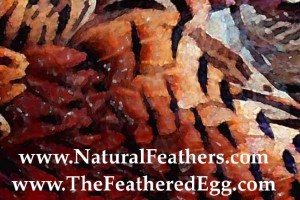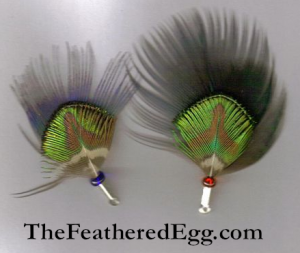
Cruelty-Free Feathers need to be protected and several aromatic herbs will work very well… and smell nice!
Feathers for arts and crafts, and feathers for fly-tying, need to be protected when stored or displayed. Especially if they have been collected, washed, and sterilized without using toxic commercial processes.
There are bugs that live on the birds and in the feathers, but there are also bugs that literally eat the feathers no matter if they are on a bird or not.
These are the bugs we have to guard against.
Herbal essential oils work so well to repel bugs from feathers that they are used in the formulas of commercial bug repellent products. But we can use them in their essential oil form, and therefore enjoy their aromatic effect without exposing ourselves to the commercial products.
When I pack my feathers for sale, I have a light touch of citronella oil on my hands, and I keep a citronella-soaked pad of cloth in the feather storage box.
I have also lined my feather storage boxes with cedar planks, the same planks that are available at hardware stores for lining cedar closets.
Many of the aromatic herbs and plants that work well to ward off bugs are the same herbs we already use in aromatherapy. We love the smell, and the bugs don’t. One of nature’s balances that works in our favor.
Citronella is a good essential oil to use, and so is cedar – either the wood or the oil. Eucalyptus works well, as does Clove, and Patchouli, and Cinnamon, and Lavender. Neem oil is also considered a good bug repellent, but I haven’t snarfed that one, so I’m not sure how good it smells.
Just dab the oil on a small cloth and put it in with your feathers. Put another dab of oil on your hands when you work with the feathers. Refresh the oil every so often, which gives you an excuse to pet your feather artwork. Frustrate those bugs, and preserve your arts and crafts feathers!

